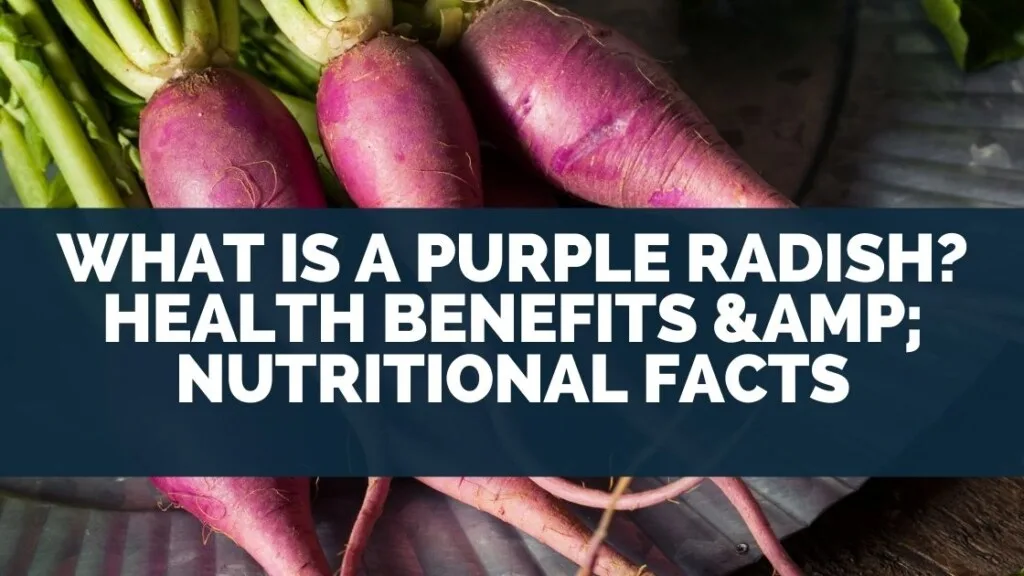
Purple radishes are classified as root vegetables and provide benefits similar to other starchy vegetables.
They contain high levels of potassium, calcium, fiber, vitamin C, folate, and magnesium. The purple skin of purple radishes is very thin and contains no nutrient content.
This article will explain further how purple radishes can be beneficial to your health.
Table of Contents
What is Purple Radish?
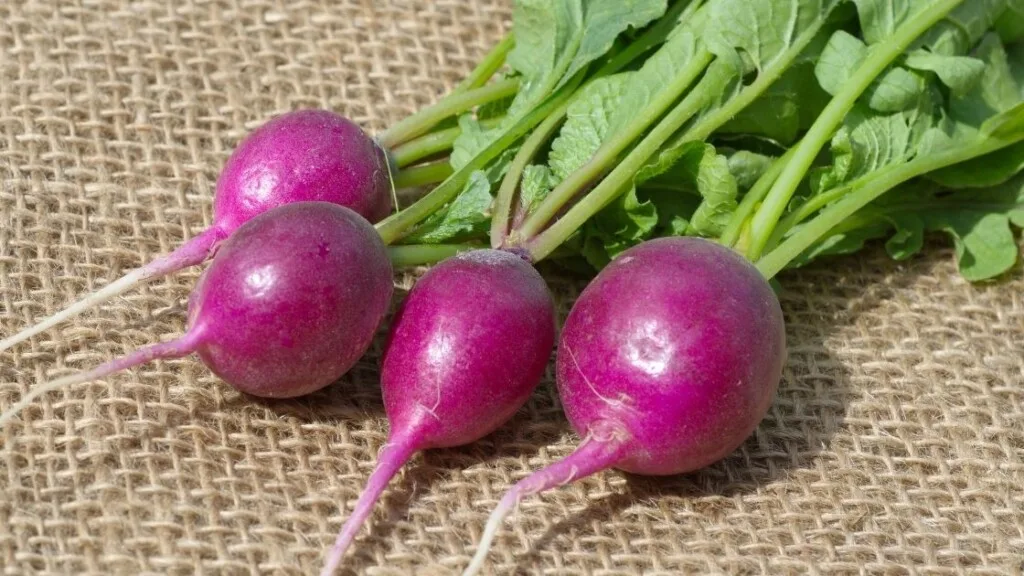
Purple radishes can be found in a variety of shapes and sizes.
Typically, they have a round, oval, or cylindrical shape, with a single purple taproot that is tapered at the end.
The skin of the radish is semi-smooth and hard, with solid to mixed colors of light purple, dark purple, and violet on the outside of the vegetable’s exterior.
Dense, crisp, and two-toned flesh lies beneath the surface, with purple and white stripes that run in a row down the length of its body.
If the flesh is also a dark purple color, the fruit may be entirely purple or entirely white.
Even as they grow in size, they maintain their crunchy, snappy core.
Purple radishes do not have a pity taste. In addition, the roots have a mild, slightly sweet, and peppery flavor that is pleasant to eat.
The sharpness of the root varies depending on the variety and the climate in which it is grown, so it can be difficult to compare one root to another.
The roots have a stronger, more pungent, and spicy flavor in hotter climates.
The roots are mild and slightly peppery when grown in cooler climates. Its texture and flavor are similar to that of a potato when cooked, and it has a neutral flavor.
Purple radishes aren’t the only thing that comes from the plants.
They also have dark green, serrated leaves that have a flavor that is similar to that of vegetables and peppers.
Nutritional Value
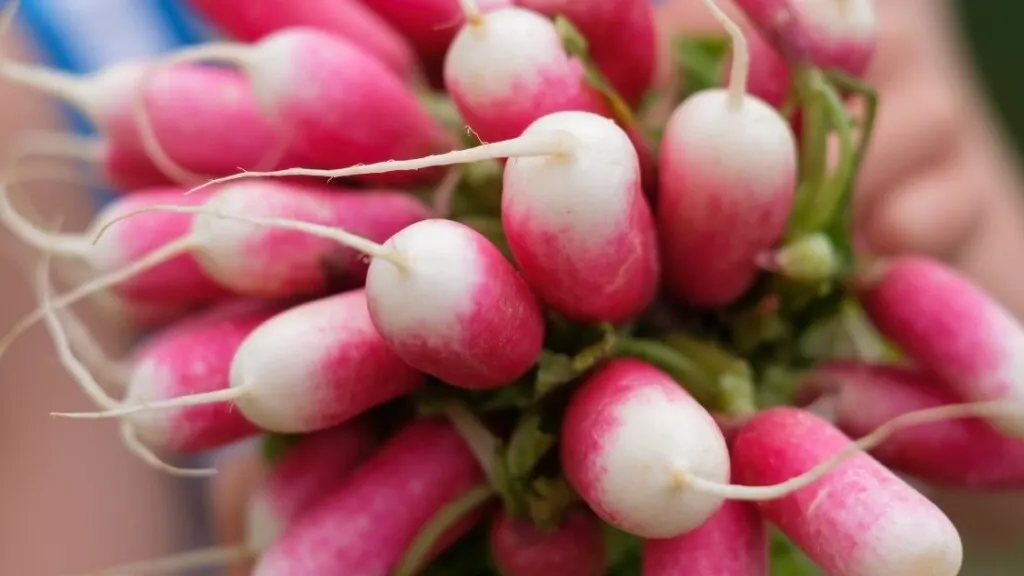
Purple radish contains a high amount of fiber, which aids in digestion, as well as vitamin C, which strengthens the immune system while decreasing inflammation, and vitamin A, which helps to keep the body’s systems in good working order.
A bonus is that the roots contain potassium, which aids in the maintenance of fluid balance, calcium, and phosphorus, which aid in the strengthening of bones and teeth, as well as trace amounts of copper and magnesium.
Additionally, purple flesh contains anthocyanins, which are antioxidant pigments that aid in the protection of cells against free radical damage.
Purple flesh contains a variety of vitamins and minerals as well.
Health Benefits of Purple Radish
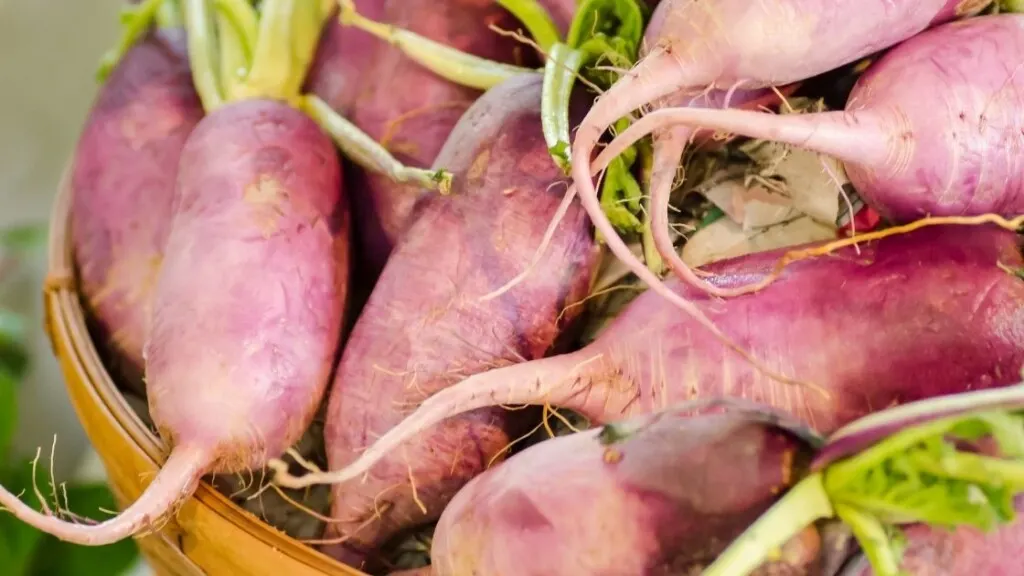
Prevents the Symptoms of Arthritis:
Purple radish varieties with purple flesh can help improve the symptoms associated with mild to moderate arthritis-like joint pain, stiffness, and swelling.
According to research conducted at Louisiana State University, purple radishes may help reduce inflammation.
Researchers found that an extract made from purple radishes reduced the expression of two genes implicated in inflammation and the production of enzymes that aggravate arthritis.
Prevents Cancer
Anthocyanins found in purple radishes may help prevent cancer by inhibiting cell mutations that cause cancerous growth, according to a study conducted at the Linus Pauling Institute (LPI) at Oregon State University.
The findings were published in the January 2012 issue of Molecular Nutrition & Food Research. Specifically, purple radish extracts suppressed the growth of cancer cells by inactivating a protein called PI3K.
Researchers concluded that purple radishes with purple flesh may prevent cancer in its early stages by inhibiting key enzymes involved in tumor growth.
Heart Disease Treatment
One purple variety, known as the purple daikon radish, which is characterized by an elongated white taproot and purple-streaked secondary roots, has been shown to improve heart function and treat cardiovascular diseases like high blood pressure and high cholesterol.
A study conducted in Korea on 30 men indicated that purple daikon radish may reduce arterial stiffness and increase flexibility, two factors that improve heart function and cardiovascular health.
Eating purple daikon radish may also benefit cholesterol levels because the root contains compounds called glucosinolates, which are converted to isothiocyanates after ingestion.
Researchers found that these compounds work to lower cholesterol by breaking down fats in the bloodstream before they get deposited on artery walls.
The purple daikon variety also contains high amounts of vitamin C, a nutrient that helps break down cholesterol in the colon and prevents it from being absorbed into the blood.
In addition to purple daikon, other purple varieties may help lower bad cholesterol levels while raising good ones by improving blood flow throughout the body and regulating energy metabolism.
It Helps Prevent Alzheimer’s Disease.
According to the American Health Assistance Foundation (AHAF), purple radish extracts may help prevent or slow the progression of Alzheimer’s disease.
Research suggests that purple radish compounds may improve memory recall by increasing blood flow to the brain and stimulating neuron activity, which prevents age-related degradation in brain function, otherwise known as cognitive decline.
Other purple radish varieties may help prevent Alzheimer’s by acting as multivitamins and providing antioxidants to the body that work to reduce oxidative stress and prevent neuron and brain cell damage.
Oral Health
Purple radish extracts may help reduce inflammation in the mouth by inhibiting the activity of neutrophils, according to a study published in the December 2012 issue of the Journal of Medicinal Food.
The purple pigmented extract’s ability to suppress the immune response and prevent inflammation suggests that purple radishes can be used as natural remedies for mouth inflammation like cavities and gingivitis.
How to Eat Purple Radish?
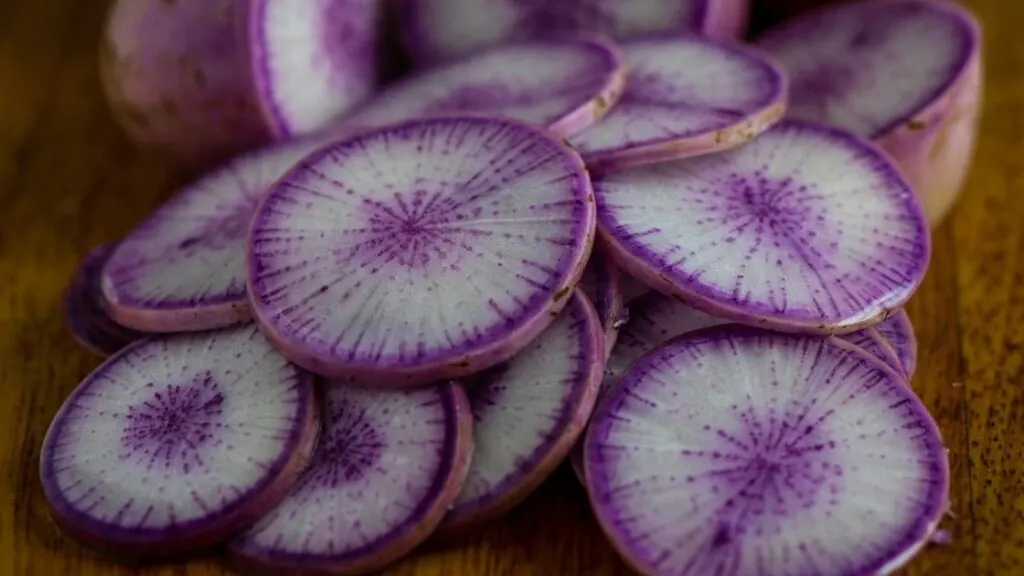
Purple radishes can be prepared and eaten in a variety of ways, making them a versatile addition to many meals.
The purple flesh is delicious raw or lightly steamed, and purple daikon varieties taste especially good sliced thin and added to stir-fries.
Purple radishes with purple skin should be peeled as the pigment may irritate the skin, and purple varieties may taste less bitter when chopped and added to salads.
Final thoughts
Purple radish is very nutritious and delicious.
Purple radish has many health benefits and can be eaten raw or cooked.
Purple daikon radish may improve heart function, boost cancer-fighting antioxidants and prevent Alzheimer’s disease.
This will be a great addition to your diet and a good source of nutrients.

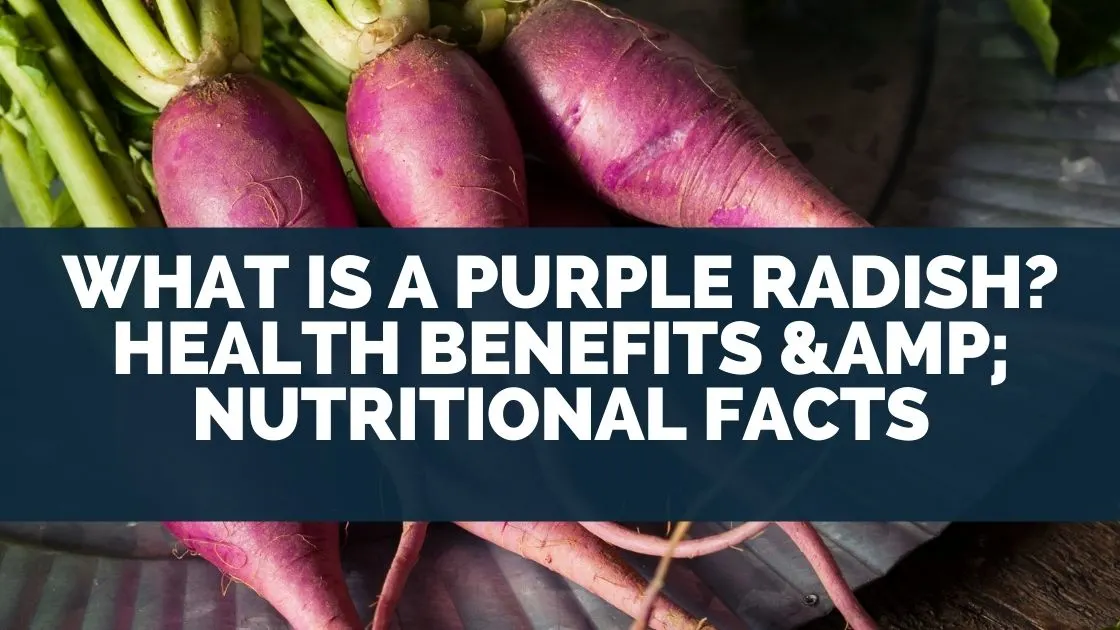
Leave a comment